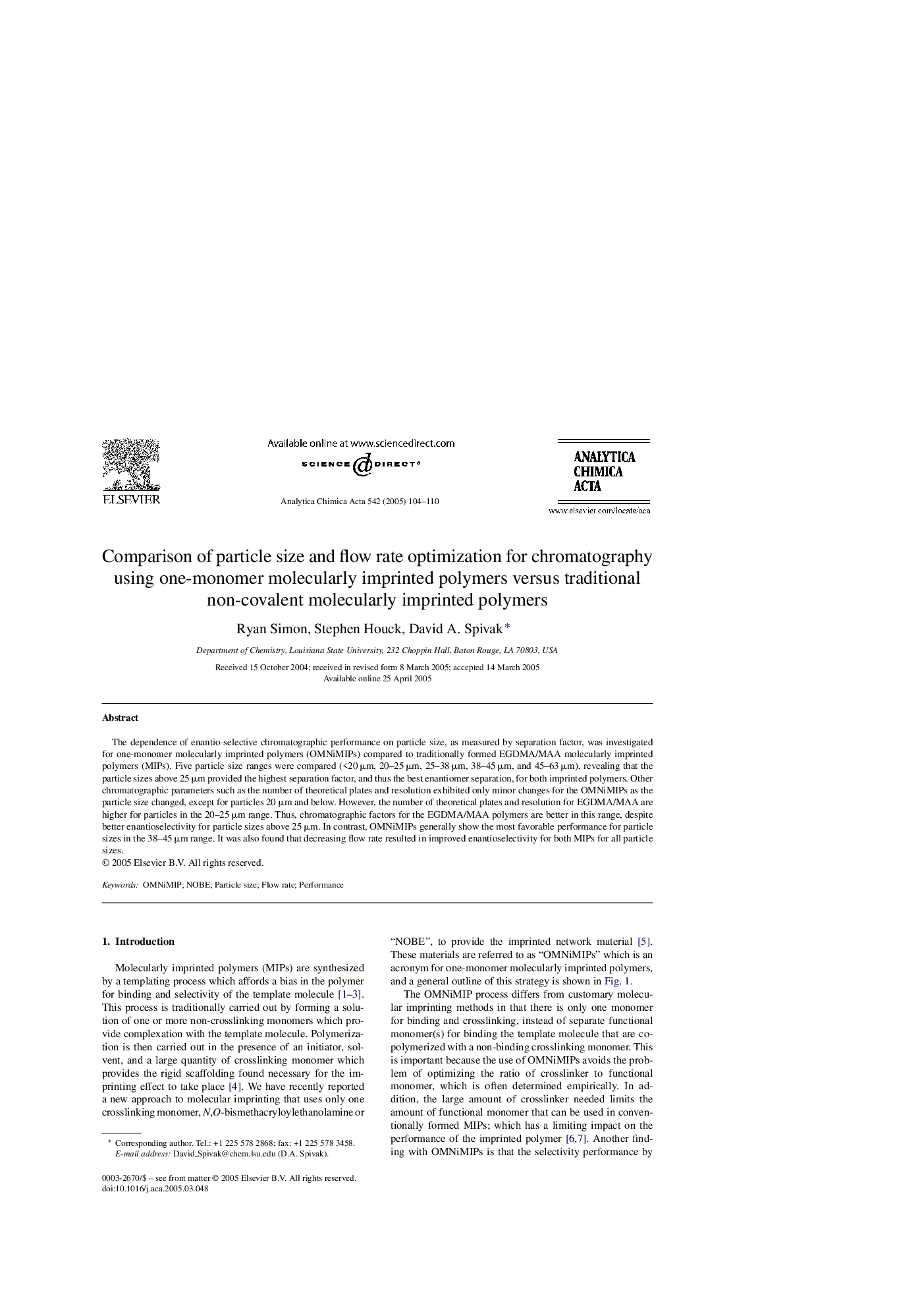| Article ID | Journal | Published Year | Pages | File Type |
|---|---|---|---|---|
| 10528704 | Analytica Chimica Acta | 2005 | 7 Pages |
Abstract
The dependence of enantio-selective chromatographic performance on particle size, as measured by separation factor, was investigated for one-monomer molecularly imprinted polymers (OMNiMIPs) compared to traditionally formed EGDMA/MAA molecularly imprinted polymers (MIPs). Five particle size ranges were compared (<20 μm, 20-25 μm, 25-38 μm, 38-45 μm, and 45-63 μm), revealing that the particle sizes above 25 μm provided the highest separation factor, and thus the best enantiomer separation, for both imprinted polymers. Other chromatographic parameters such as the number of theoretical plates and resolution exhibited only minor changes for the OMNiMIPs as the particle size changed, except for particles 20 μm and below. However, the number of theoretical plates and resolution for EGDMA/MAA are higher for particles in the 20-25 μm range. Thus, chromatographic factors for the EGDMA/MAA polymers are better in this range, despite better enantioselectivity for particle sizes above 25 μm. In contrast, OMNiMIPs generally show the most favorable performance for particle sizes in the 38-45 μm range. It was also found that decreasing flow rate resulted in improved enantioselectivity for both MIPs for all particle sizes.
Keywords
Related Topics
Physical Sciences and Engineering
Chemistry
Analytical Chemistry
Authors
Ryan Simon, Stephen Houck, David A. Spivak,
